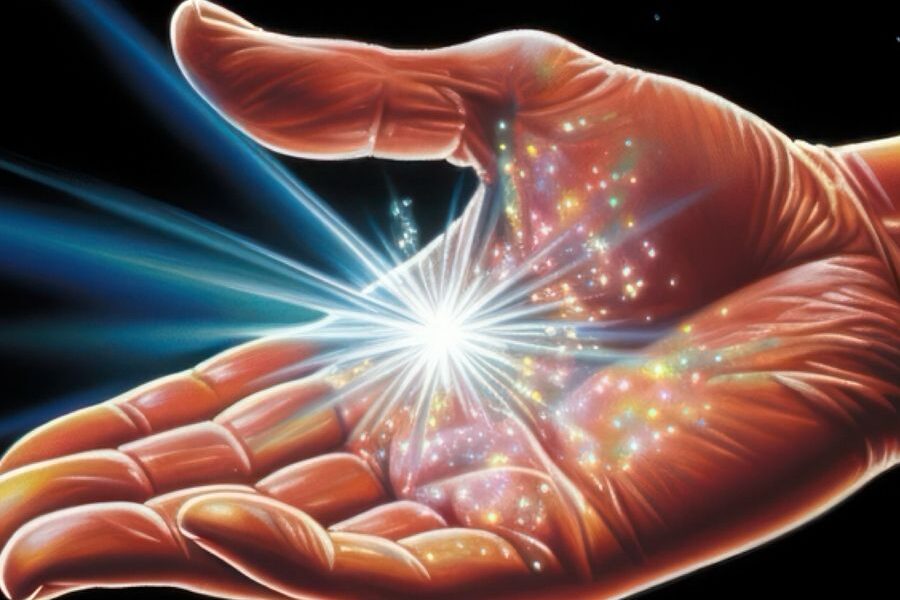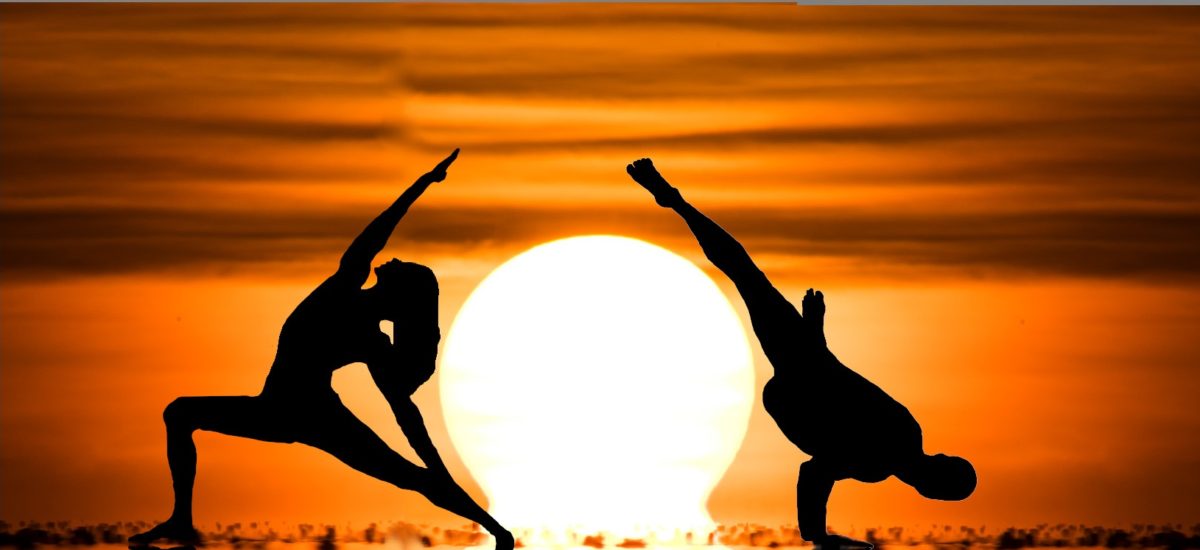What is Qigong?

Pronounced “chee gong,” Qigong is the grandfather of Tai chi that came into existence 4000-6000 years ago. Qi means “life force” while Gong means work or skill. Hence the skill of life force energy. In Qigong, the use of standing postures and moving sets prevail over seated meditation. Occasionally, one might sit and do some inner work with Qigong. The physical movements and postures help Qi flow through the body directing it. The directed Qi will go where needed. Typically, Qigong uses many faculties of the mind at once to produce the intended result such as concentration, intention and breath.
Is Qigong the same as Tai chi?

Tai chi is a martial fighting system. Tai chi also explores the art of movement. Though predominately for self defense, Tai chi also includes moving meditation. The movements and sequences help induce a meditative state. Tai chi can be slow and smooth or quick. Through a combination of mind, breath, movement and intention, one can achieve a state of balance and harmony.
Although Qigong also uses mind, breath, movement and intention, it differs from Tai chi in the sense that qigong is not martial in nature. One can fight with Tai chi, but not with qigong. Tai chi uses many different movements in sequence, while qigong will typically repeat a movement over and over for a predetermined amount of repetitions. Repeating the same move several times stimulates muscle, respiration and other energetic functions in the body to attain a specific result. Qigong is considered the more spiritual of the two processes. Qigong will regulate the body’s functions. Tai chi will also regulate the body in a similar manner using a different method.
What would you use Qigong for?
Qigong has a range of applications ranging from specific to general uses. Would you like to enhance your focus? What about your performance? Wish you could get better sleep? Qigong helps in all these areas. In fact, there are many such studies that indicate positive changes on an objective hormonal level as well as a subjective sleep and depression score. Qigong helps with certain chronic conditions. Bear in mind, Qigong is used for regular maintenance as well.
Qigong works to promote a balanced lifestyle by preserving the body’s vital energy, named Qi, while cultivating and drinking from the fountain of infinity. The key focus should be the preservation of vital energy. Far too many people deplete themselves to the point of exhaustion. Unfortunately this is built into society. This stems from a combination of lack of sleep, lack of physical activity and excess stress.
Imagine, if you will, that Qigong is similar to storing up energy in a battery. A battery will run out from daily activities and needs recharging. Sleeping will recharge the battery. For most people, sleeping leads to waking up less than adequately charged. Assume you are running at about 60% charge for that day. Qigong helps close that gap. Meditation, such as Qigong, correlates with replacing sleep. The added benefit is that Qigong will not only fully recharge the battery, but also do more to enhance your quality of life.
What are some benefits?
Some of the benefits from Qigong treatments and practice are as follows:
- Improved focus and concentration
- Improved recovery leading to better daily performance
- Better balance
- Better range of motion and flexibility
- Improved pain management
- Better strength
- Improved respiratory functions
- Improved immune functions
- Better circulation
- Balanced nervous system leading to better rest and deeper sleep.
What is Qi or life force?

Qi, also known by other names like prana, is the energy that makes us alive. It animates the body, regulates the functions and helps us experience emotions, Qi is an interesting concept in that it covers many different functions of the body. For example, there is qi from the food you eat. There is the qi from the air that we breath. There is also qi surrounding the body called the Wei Qi. It provides a protective barrier. Qi courses throughout the body in different forms and has cycles that run at different times of the day. Everything uses qi and it surrounds is in our daily life.
Qi ties in to many physiological functions. Although from a western allopathic perspective, no one bodily system can account nor define qi, it is fair to say that qi represents a sort of bioelectricity. However at the same time, Qi has an intelligence to it. Qi knows what to do, but Qi can also be directed. Qi is subtle. This factor is responsible for why Qi is difficult to detect despite our technological advances. Despite that, Qi still remains the foundational aspect behind the theory of Chinese medicine.
How does this work with Chinese medical theory?
Chinese medical theory forms the basis and the principles behind the construction of Qigong. Thus it works via the five element theory. The five elements being: Wood, fire, earth, metal, and water. Yin and yang, also called passive and active, are woven in with the concept of five elements. Overlay these concepts onto the energetic and physical anatomy of the body and you get a basic working theory of Chinese Medicine. The physical aspect relates to the organs within the body. The energetic aspect also starts with the organs and then blossoms out into a system of meridians and points.
Think of it like this. The organs themselves would represent lakes. The meridians would be rivers. The acupuncture points are like pools or even puddles and estuaries that form alongside it.

How does Qigong affect the energy?
Since the mind can lead the qi, the concentration and the intention of the individual performing the practice will enhance the practice beyond simply doing the movements. An example being if you were working on a movement for the lungs, the focused intention of working on the lungs allows more of the qi to flow to that area.
Qigong movements and sequences will also affect the physical body and thus by association the energy body. The stretching and moving of the tissues will stimulate the expansion and contraction of meridians that facilitate the flow of qi. Other tissues, like the internal organs, are massaged or compressed. This pumping action allows stuck qi to be expelled bringing in the much needed fresh qi. Specific exercises target specific meridians, organs or even areas of the body.
The breathwork comes into play to affect the mind and the energy flow. Deep abdominal breathing massages internal organs, but will also allow the mind to calm and settle. A more relaxed mind will then lead to a more relaxed body. This is how the body is rebalanced.
Why move the Qi?
We want flow. Good flow ensures the body works at a high level and functions optimally. Just like blood flow keeps the cells and tissues alive, qi flow keeps the body going. With hampered flow, a level of stagnation forms within the body. Imagine you get struck really hard. A bruise forms. That bruise is a form of stagnation namely blood stagnation. The medical term being a hematoma or blood cluster.
Blood and blunt force are not the only things that affect the energy flow. Energetic issues will also cause areas of stagnation or stuck Qi. For example, someone who is talkative in a one on one setting, but goes blank in a group setting would have an energetic block that manifests in that situation. Something prevents that person from speaking, but it is not a physical malady per say.
Tack on top of this the spiritual body. We have a physical body that moves through an energetic function, but it is the spiritual aspect that causes it to move. The thoughts and the intention of the person play a critical role. The thoughts lead the mind. The mind leads the qi. This is why Qigong is an all encompassing skill of working with your life force energy.
What about sessions?
Treatment sessions are Qigong applied to the person as opposed to being done by the person. This benefits you because we tend to be unaware of our blind spots. Consider that before the advent of cameras on cell phones, the best way to learn and improve your exercise form was to use a personal trainer. The trainer not only guided you, but would point out areas you were didn’t know needed improvement.
Having a session with a practitioner of Medical Qigong or a Chinese Energetic Practitioner, is similar. What you need to improve is shown to you, saving you years of struggle and discomfort. Life is too short to live in pain and suffer needlessly. If you are ready to move past these pain points in your life, start the process and book a consultation here.

One thought on “Frequently asked questions on Qigong.”
Comments are closed.